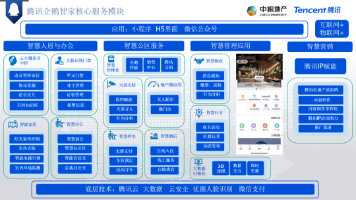FPGA加速卷积神经网络(二)使用caffe训练自己的网络模型
训练自己的模型
·
在之前的caffe配置中,我们已经下载好了cifar10的数据。这里我就用cifar10的example进行一些修改,建立自己的训练脚本。
进入caffe目录,在/example/cifar10下可以看到一些示例脚本
这里我们复制cifar10_full_sigmoid_train_test.prototxt并重新命名,然后将网络结构修改成我们需要的样子。
注意:将里面的路径修改成绝对路径
name: "CIFAR10_full"
layer {
name: "cifar"
type: "Data"
top: "data"
top: "label"
include {
phase: TRAIN
}
transform_param {
mean_file: "/home/kzj/CNN/caffe/examples/cifar10/mean.binaryproto"
}
data_param {
source: "/home/kzj/CNN/caffe/examples/cifar10/cifar10_train_lmdb"
batch_size: 100
backend: LMDB
}
}
layer {
name: "cifar"
type: "Data"
top: "data"
top: "label"
include {
phase: TEST
}
transform_param {
mean_file: "/home/kzj/CNN/caffe/examples/cifar10/mean.binaryproto"
}
data_param {
source: "/home/kzj/CNN/caffe/examples/cifar10/cifar10_test_lmdb"
batch_size: 100
backend: LMDB
}
}
layer {
name: "conv1"
type: "Convolution"
bottom: "data"
top: "conv1"
param {
lr_mult: 1
}
param {
lr_mult: 2
}
convolution_param {
num_output: 32
kernel_size: 5
stride: 1
weight_filler {
type: "gaussian"
std: 0.0001
}
bias_filler {
type: "constant"
}
}
}
layer {
name: "relu1"
type: "ReLU"
bottom: "conv1"
top: "conv1"
}
layer {
name: "conv2"
type: "Convolution"
bottom: "conv1"
top: "conv2"
param {
lr_mult: 1
}
param {
lr_mult: 2
}
convolution_param {
num_output: 32
kernel_size: 5
stride: 1
weight_filler {
type: "gaussian"
std: 0.01
}
bias_filler {
type: "constant"
}
}
}
layer {
name: "relu2"
type: "ReLU"
bottom: "conv2"
top: "conv2"
}
layer {
name: "ip1"
type: "InnerProduct"
bottom: "conv2"
top: "ip1"
param {
lr_mult: 1
decay_mult: 250
}
param {
lr_mult: 2
decay_mult: 0
}
inner_product_param {
num_output: 10
weight_filler {
type: "gaussian"
std: 0.01
}
bias_filler {
type: "constant"
}
}
}
layer {
name: "accuracy"
type: "Accuracy"
bottom: "ip1"
bottom: "label"
top: "accuracy"
include {
phase: TEST
}
}
layer {
name: "loss"
type: "SoftmaxWithLoss"
bottom: "ip1"
bottom: "label"
top: "loss"
}
再复制cifar10_full_solver.prototxt,并重命名,修改内容。
# reduce learning rate after 120 epochs (60000 iters) by factor 0f 10
# then another factor of 10 after 10 more epochs (5000 iters)
# The train/test net protocol buffer definition
net: "/home/kzj/CNN/caffe/kzj_test/two_conv_train_ex.prototxt"
# test_iter specifies how many forward passes the test should carry out.
# In the case of CIFAR10, we have test batch size 100 and 100 test iterations,
# covering the full 10,000 testing images.
test_iter: 100
# Carry out testing every 1000 training iterations.
test_interval: 400
# The base learning rate, momentum and the weight decay of the network.
base_lr: 0.0005
momentum: 0.9
weight_decay: 0.004
# The learning rate policy
lr_policy: "fixed"
# Display every 200 iterations
display: 200
# The maximum number of iterations
max_iter: 10000
# snapshot intermediate results
snapshot: 2000
snapshot_format: HDF5
snapshot_prefix: "/home/kzj/CNN/caffe/kzj_test/two_conv_train"
# solver mode: CPU or GPU
solver_mode: CPU
最后再建立一个执行脚本文件
TOOLS=~/CNN/caffe/build/tools
$TOOLS/caffe train \
--solver=/home/kzj/CNN/caffe/kzj_test/two_conv_train_ex_solver.prototxt
完成后可以新建一个文件夹, 把三个文件放到一起,但三个文件中的路径一定要是绝对路径,否则训练过程中会出现错误。
现在执行训练脚本即可开始训练,训练完成后会在目录下保存训练好的模型文件。
更多推荐
 已为社区贡献1条内容
已为社区贡献1条内容








所有评论(0)